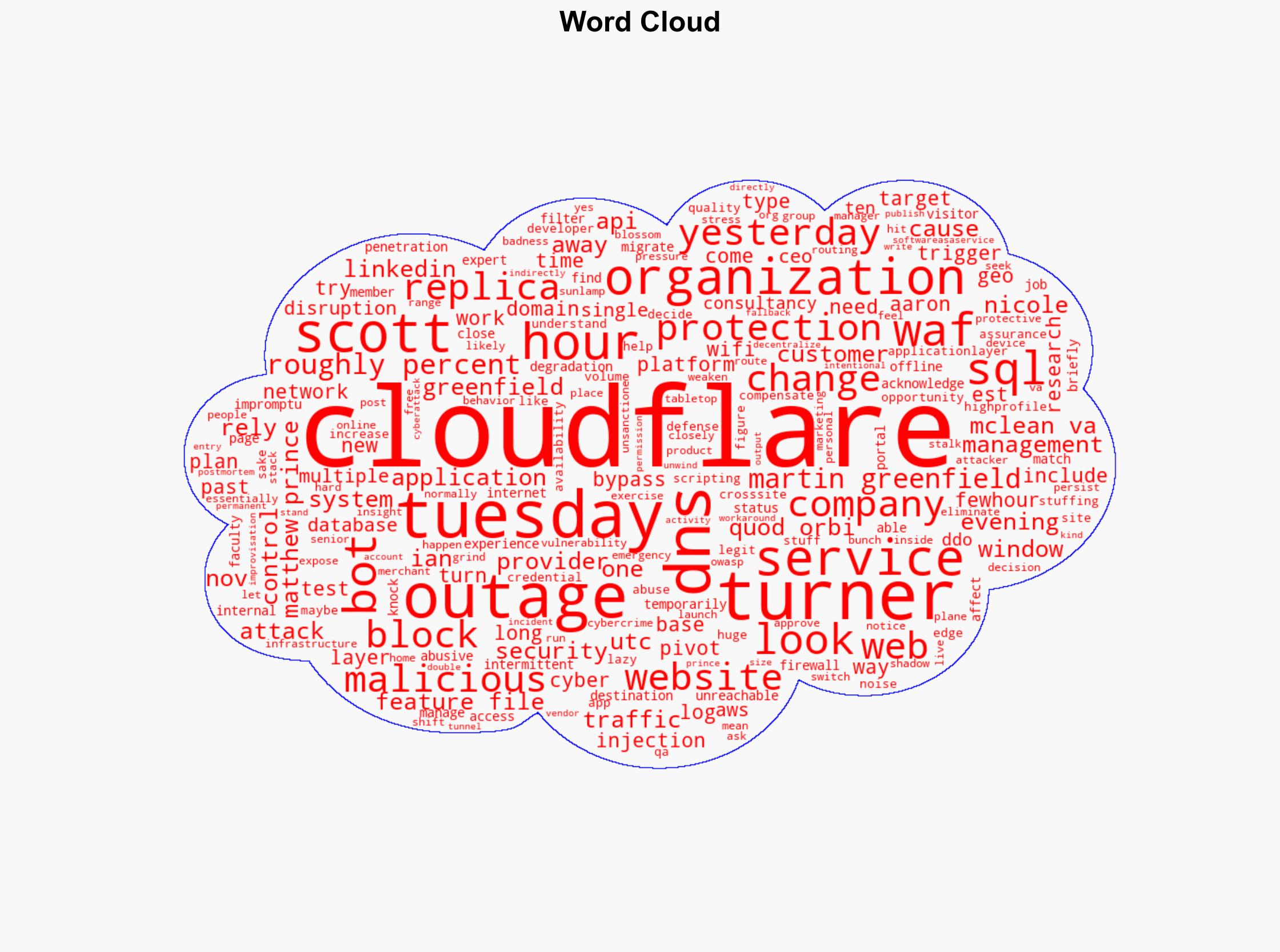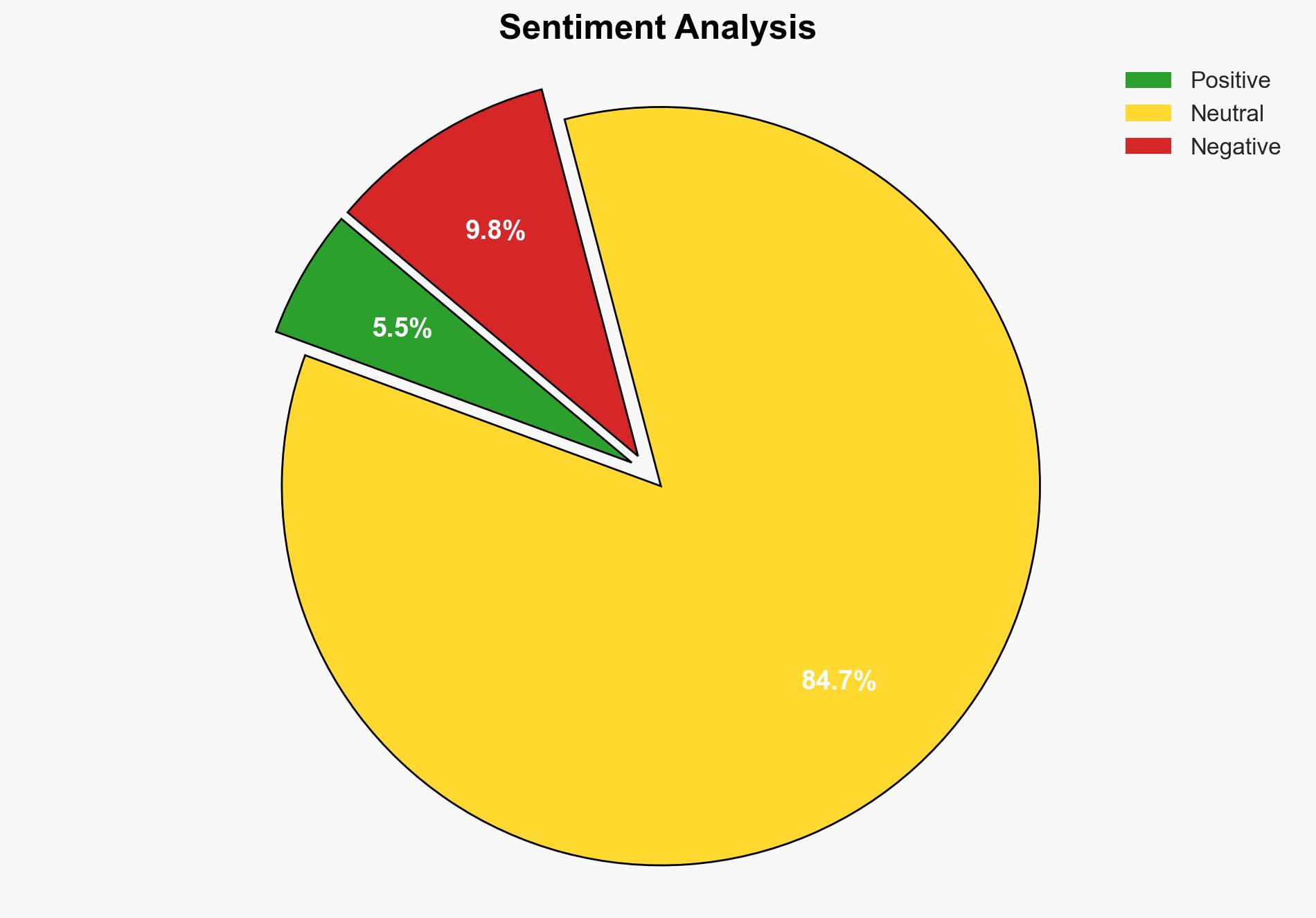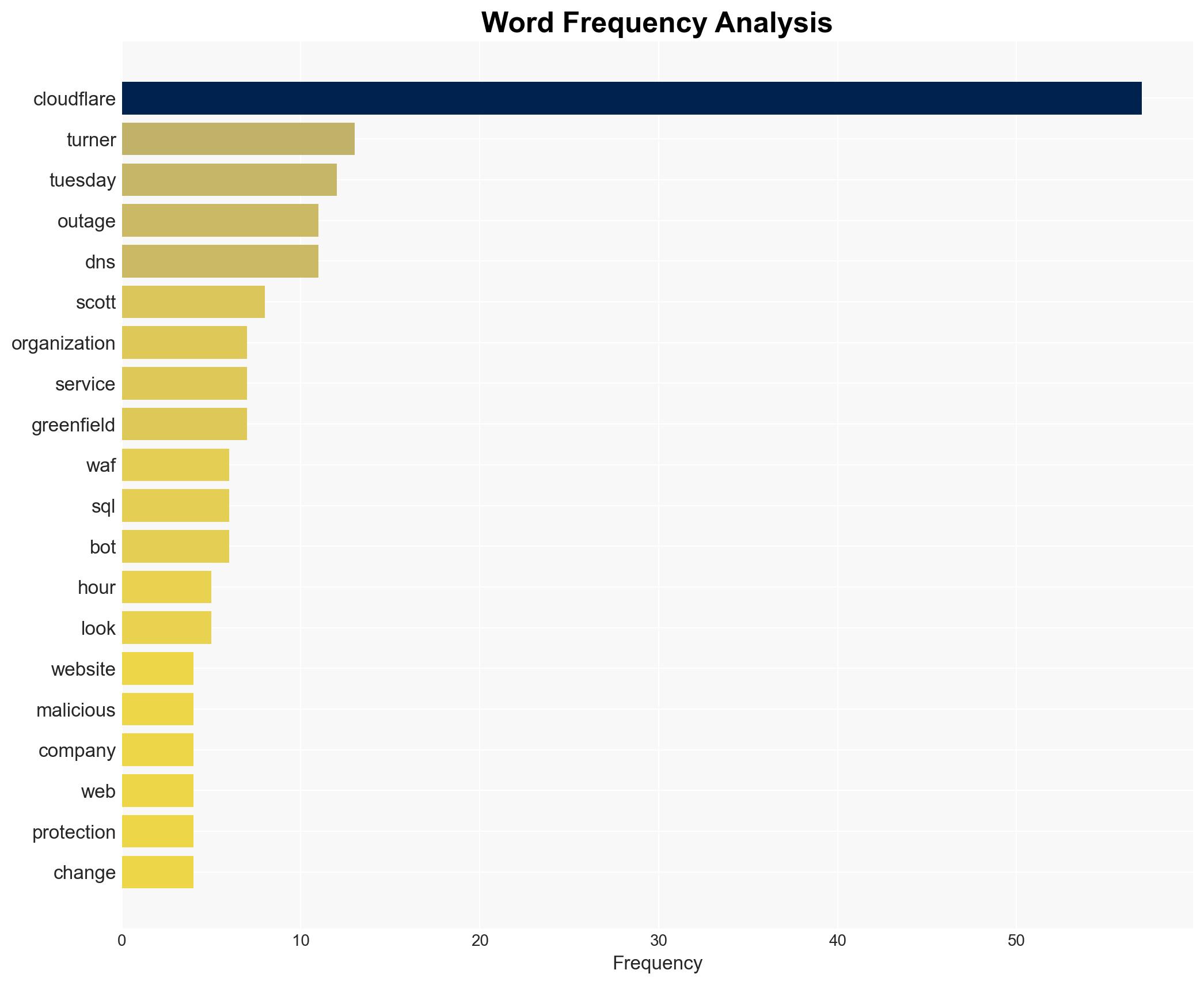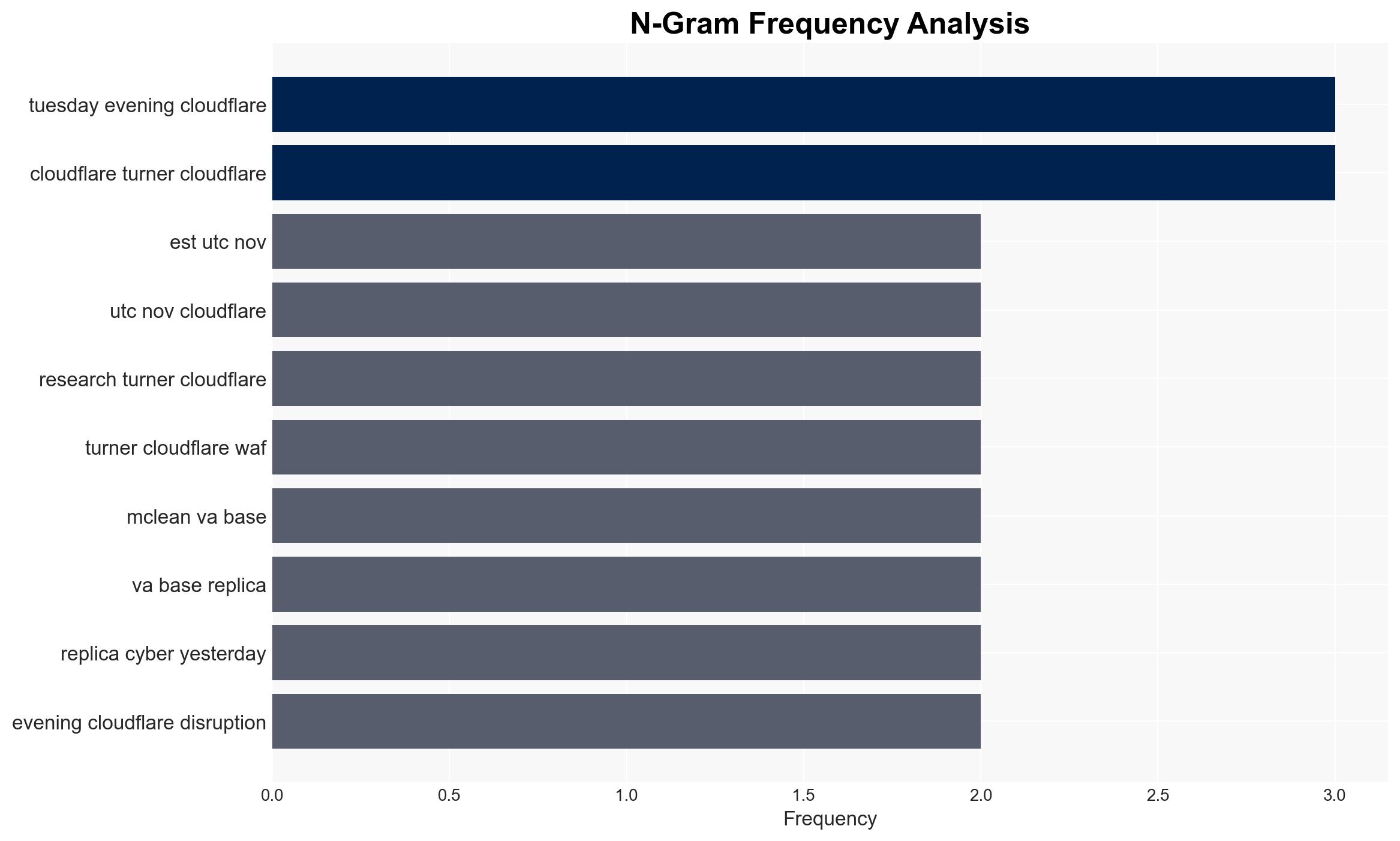The Cloudflare Outage May Be a Security Roadmap – Krebs on Security
Published on: 2025-11-19
AI-powered OSINT brief from verified open sources. Automated NLP signal extraction with human verification. See our Methodology and Why WorldWideWatchers.
Intelligence Report:
1. BLUF (Bottom Line Up Front)
The Cloudflare outage, while not caused by a cyberattack, exposed vulnerabilities in the reliance on centralized cloud services. The most supported hypothesis is that the outage was an unintended consequence of internal system changes, not a deliberate attack. Organizations should enhance their contingency plans and diversify their service providers. Confidence Level: Moderate.
2. Competing Hypotheses
Hypothesis 1: The outage was caused by an internal system error related to database permissions and feature file size, as stated by Cloudflare’s CEO. This is supported by the official explanation and the absence of evidence indicating a cyberattack.
Hypothesis 2: The outage was a result of a sophisticated cyberattack that exploited vulnerabilities during the system change. This hypothesis is less supported due to the lack of direct evidence of malicious activity and the company’s transparency about the cause.
Hypothesis 1 is more likely given the available evidence and Cloudflare’s prompt communication about the incident.
3. Key Assumptions and Red Flags
Assumptions: The information provided by Cloudflare is accurate and complete. Organizations have the capability to pivot away from Cloudflare services effectively.
Red Flags: Potential bias in Cloudflare’s reporting to downplay the incident. Lack of third-party verification of the cause.
Deception Indicators: No clear indicators of deception, but reliance on a single source (Cloudflare) for incident details is a concern.
4. Implications and Strategic Risks
The outage highlights the risks of dependency on a few major cloud service providers, which could lead to widespread disruptions in the event of failures or attacks. This centralization poses a significant cyber and economic risk, as it can affect numerous organizations simultaneously. The incident also underscores the need for robust incident response and disaster recovery plans.
5. Recommendations and Outlook
- Mitigation: Organizations should develop and test contingency plans to switch between service providers quickly. They should also conduct regular security audits and penetration tests to identify vulnerabilities.
- Exploitation: Use the incident as a learning opportunity to improve security posture and resilience against future outages.
- Best-case Scenario: Organizations strengthen their security and contingency measures, reducing the impact of future outages.
- Worst-case Scenario: A similar outage occurs, leading to significant economic losses and reputational damage for affected organizations.
- Most-likely Scenario: Organizations make incremental improvements in their security and contingency planning, but reliance on major cloud providers remains high.
6. Key Individuals and Entities
Matthew Prince: CEO of Cloudflare, provided the official explanation for the outage.
Aaron Turner: Faculty member at IAN Research, commented on the security implications of the outage.
Nicole Scott: Senior Product Marketing Manager at Replica Cyber, discussed the incident’s impact on organizational security practices.
7. Thematic Tags
Structured Analytic Techniques Applied
- Adversarial Threat Simulation: Model and simulate actions of cyber adversaries to anticipate vulnerabilities and improve resilience.
- Indicators Development: Detect and monitor behavioral or technical anomalies across systems for early threat detection.
- Bayesian Scenario Modeling: Quantify uncertainty and predict cyberattack pathways using probabilistic inference.
- Network Influence Mapping: Map influence relationships to assess actor impact.
Explore more:
Cybersecurity Briefs ·
Daily Summary ·
Support us





